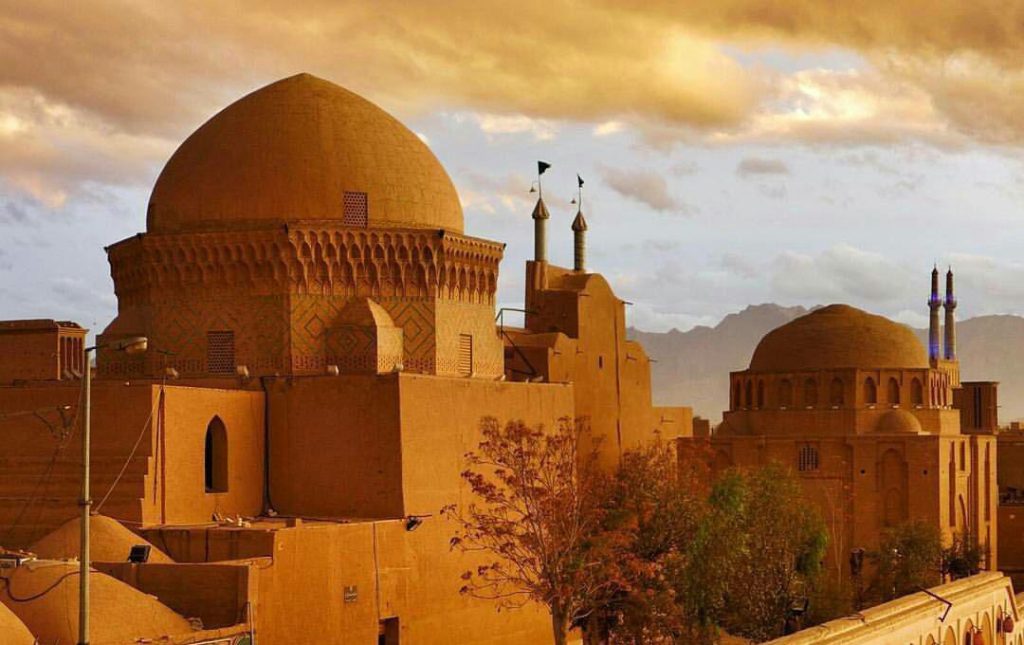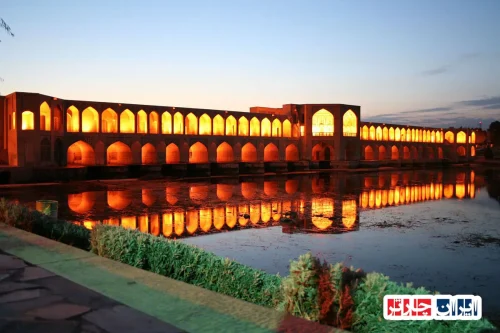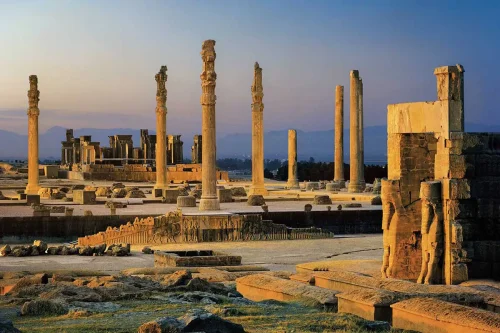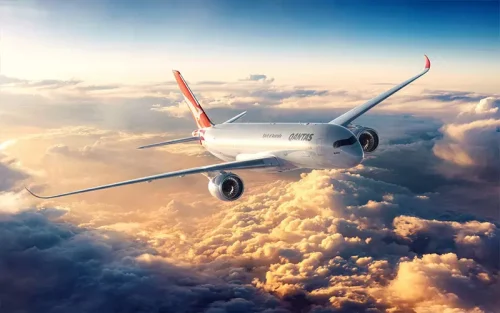News Source : https://www.irna.ir/news/85683201/%D8%AD%D9%85%D9%84-%D9%88%D9%86%D9%82%D9%84-%D9%85%D8%B3%D8%A7%D9%81%D8%B1-%D8%A7%D8%B3%D8%AA%D8%A7%D9%86-%DB%8C%D8%B2%D8%AF-%D8%B1%DB%8C%D9%84-%D8%AF%D8%A7%D8%B1%D8%AF-%D8%A7%D9%85%D8%A7-%D9%82%D8%B7%D8%A7%D8%B1-%D9%86%D9%87
Passenger Transportation in Yazd: Having Rails but No Operational Trains
Passenger Transportation in Yazd: Having Rails but No Operational Trains is one of the major challenges limiting the development of tourism in Yazd. Despite being one of Iran’s top tourist destinations, attracting thousands of tourists annually, insufficient rail infrastructure poses a significant barrier to sustaining this trend. The lack of adequate trains and poor quality rail services fail to meet the basic transportation needs of passengers, causing widespread dissatisfaction among citizens. For example, students who have to travel weekly from other cities to Yazd suffer from limited train capacity and insufficient ticket availability. Similarly, employees commuting between Yazd and Tehran face similar challenges. In addition to delays, the low quality of existing train services has led to passenger dissatisfaction. The 80% reduction in passenger train capacity in Yazd, besides reducing passenger comfort, has negatively impacted attracting foreign tourists. Improving and increasing train capacity, along with enhancing rail services, can play a crucial role in improving passenger experience and boosting Yazd’s tourism appeal. Therefore, collaboration with the private sector for importing new fleets and providing appropriate infrastructure seems essential. Considering the importance of railway transportation in reducing road traffic and air pollution, increasing the number of passenger trains and improving the provided services can significantly enhance the overall transportation situation and facilitate passenger journeys.
Current Status of Passenger Trains in Yazd Province
Passenger transportation in Yazd province faces a significant challenge as it has rail infrastructure but lacks sufficient passenger trains. Despite having the necessary rail infrastructure, there is a severe shortage of active and reliable passenger trains. This limitation has resulted in the unmet daily needs of passengers, including students and employees. The reduced capacity of trains and the lack of available tickets have created major issues for passengers, negatively impacting the quality of life and economic efficiency of the province.
Impact of Passenger Train Shortage on Tourism in Yazd
Yazd, as one of Iran’s major tourist destinations, attracts thousands of tourists annually. However, the deficiency in passenger rail transportation poses a significant barrier to tourism development in the province. The lack of sufficient trains and poor rail service quality prevent both international and domestic tourists from easily accessing this historic city. This issue not only affects tourists’ travel experience but also reduces economic revenue related to tourism.
Issues with Current Train Services in Yazd
The active passenger trains in Yazd province face several issues, including frequent delays, poor service quality, and lack of amenities. These problems have led to widespread dissatisfaction among passengers and have undermined trust in the rail transportation system. Furthermore, the maintenance and repair conditions of the current train fleet are not at a desirable level, which not only increases travel costs for passengers but also endangers travel safety.
Role of Private Sector Investment in Improving Yazd Rail Transportation
Enhancing the quality and capacity of rail transportation in Yazd province requires cooperation and investment from the private sector. Importing new fleets and improving existing infrastructure can play a key role in resolving the current challenges. Collaborating with private companies to supply new and modern passenger trains can significantly increase train numbers and improve service. Additionally, investing in new rail technologies can improve performance and reduce operational costs.
Local Passengers’ Needs and the Impact of Reduced Train Capacity
Local passengers in Yazd province, including students and employees, are heavily affected by the reduced capacity of passenger trains. The lack of sufficient tickets and limited train numbers have forced passengers to resort to other more expensive means of transportation. These limitations not only create financial problems for passengers but also reduce productivity and increase travel time. Addressing these issues requires increasing train numbers and ticket availability.
Advantages of Rail Transport Compared to Other Vehicles in Yazd
Rail transport offers several advantages over other vehicles like buses and private cars. Advantages include increased safety, reduced road traffic, decreased air pollution, and time savings. Moreover, rail transport can provide passengers with a more comfortable and pleasant experience, which can positively impact tourist attraction. Therefore, improving the rail transport system can meet local needs while delivering economic and environmental benefits.
Efforts by Railways to Increase the Passenger Train Fleet
The Iranian Railways is striving to meet the growing demands of passengers by increasing the passenger train fleet. Efforts include importing new trains, refurbishing old ones, and adding new carriages to existing trains. However, obstacles such as sourcing the necessary locomotives and engines hinder the full realization of these goals. The private sector can also play a significant role in accelerating the fleet expansion through investments.
Environmental Impact and Road Traffic Reduction Through Rail Transport
One of the main advantages of rail transport is the reduction of road traffic, leading to decreased air pollution. By increasing the number of passenger trains and improving rail services, the traffic of private cars and buses can be reduced, directly improving air quality and decreasing environmental pollutants. Additionally, greater use of rail transport can reduce fossil fuel consumption and enhance energy efficiency.
Forecasting the Future of Rail Transport in Yazd Province
The future of rail transport in Yazd province appears promising given ongoing efforts and increasing demands. With more investments, infrastructure improvements, and public-private collaborations, the rail transportation system can improve and meet passenger needs. Moreover, the development of new rail routes and increased bandwidth can enhance accessibility and travel comfort, playing a vital role in the province’s economic and tourism growth.
Proposed Solutions for Improving Rail Transport in Yazd Province
Several proposed solutions for improving rail transport in Yazd province include: 1. **Increasing the Number of Passenger Trains:** Enhancing train numbers on high-traffic routes such as Yazd-Tehran. 2. **Refurbishing and Equipping the Existing Fleet:** Addressing technical issues and improving services of existing trains. 3. **Reviving Tourist Routes:** Developing rail routes for tourism like the Yazd-Shiraz-Isfahan rail triangle. 4. **Collaborating with the Private Sector:** Attracting private investments to import new trains and improve infrastructure. 5. **Increasing Ticket Capacity:** Providing sufficient tickets to meet passenger demand. 6. **Improving Travel Services:** Enhancing on-board amenities and service quality. 7. **Supporting Special Passengers:** Creating special facilities for long-term passengers like students and employees. By implementing these solutions, the Yazd rail transport system can be improved, reliably meeting passenger needs.
Frequently Asked Questions
- Why doesn’t Yazd have sufficient passenger train capacity?
- The national railway’s primary focus is on freight transport, and Yazd’s passenger services have not been adequately prioritized. The reduction in passenger train capacity and the lack of adequate trains result in unfulfilled passenger needs.
- How does the train capacity shortage affect tourism in Yazd?
- The shortage of rail transport infrastructure is a significant barrier to attracting tourists. The absence of adequate trains forces tourists to seek other, more expensive transport options, potentially reducing tourist numbers.
- What problems do migrant students in Yazd face?
- Students must travel to Yazd from other cities weekly but face a shortage of train tickets and low capacity. This compels them to purchase more expensive tickets via road transport or other cities.
- What issues do migrant employees on the Yazd-Tehran route encounter?
- Employees face ticket shortages, poor service quality on existing trains, and frequent delays, leading to dissatisfaction and increased travel costs.
- By how much has the passenger train capacity in Yazd been reduced?
- Yazd’s passenger train capacity has been reduced by approximately 80%. The daily passenger capacity fell from 1,800 to 200 and has recently increased to about 350 with new efforts.
- What steps are being taken to improve rail transport capacity in Yazd?
- Programs include increasing passenger train numbers, refurbishing and equipping the existing fleet, reviving routes like the Yazd-Shiraz-Isfahan rail triangle, and collaborating with the private sector to import new fleets.
- What share of the national railway revenue does Yazd contribute?
- Yazd alone contributes 33% of the national railway’s total revenue.
- Why have Yazd’s rail passenger services been overlooked?
- The main focus of the national railway is freight transport, and passenger services have not been adequately prioritized. Furthermore, train schedules have mainly catered to freight trains.
- What is the Golden Rail Tourism Triangle, and how will it be revived?
- The Golden Rail Tourism Triangle covers routes from Yazd, Shiraz, and Isfahan. Revitalization plans include refurbishing existing trains, adding new fleets, and collaborating with the private sector to import second-hand and self-propelled trains.
- What role does the private sector play in improving Yazd’s rail services?
- The private sector plays a crucial role in importing new fleets and providing necessary infrastructure. Agreements have been made to import second-hand and self-propelled trains from the private sector, though final agreements are still pending.
- What are the plans to increase passenger trains on the Yazd-Tehran route?
- Plans include adding new trains to the fleet, increasing the number of nighttime trains to Tehran, and collaborating with the private sector to import additional trains to meet passenger needs on this route.
- How does the rail system help reduce traffic and pollution in Yazd?
- The rail transport system can reduce road traffic, which decreases air pollution and reduces strain on urban infrastructure. This provides a positive experience for tourists and residents.
- What challenges exist in maintaining Yazd’s new trains?
- Frequent breakdowns and long delays in new trains have caused passenger dissatisfaction, forcing the railway to temporarily retire some trains for major repairs.
- What improvements are needed for Yazd’s rail equipment and fleet?
- Essential improvements include refurbishing and equipping existing fleets to address technical issues, adding new trains, sourcing appropriate locomotives, and using self-propelled trains.
- What is the forecast for Yazd’s rail system?
- With new fleets, revival of rail tourism routes, and private sector collaboration, it is expected that rail transport issues in Yazd will diminish, boosting the province’s tourism and economic capacities.
- How will the rail tourism triangle train services be improved?
- By introducing new train fleets and collaborating with private companies to provide suitable fleets, the rail tourism triangle train passing through Tehran, Shiraz, Isfahan, and Yazd will be reinstated.
- What issues exist in Yazd’s Pardis trains?
- Frequent faults and the length of the Yazd route have rendered Pardis trains unusable for the route. As a result, it was decided to strengthen the existing fleet and add new carriages to the current trains.
- What steps are being considered to import new trains to Yazd?
- Agreements have been made with the private sector to import second-hand and self-propelled trains. Furthermore, private sector investment’s role in sourcing locomotives and engines for new train operations is emphasized.
- Why were Turnset trains sidelined on the Yazd route?
- Turnset trains were sidelined due to the requirement of sourcing supplies and equipment from abroad and cooling and heating system issues. They were replaced with four-seat sleeper trains.











